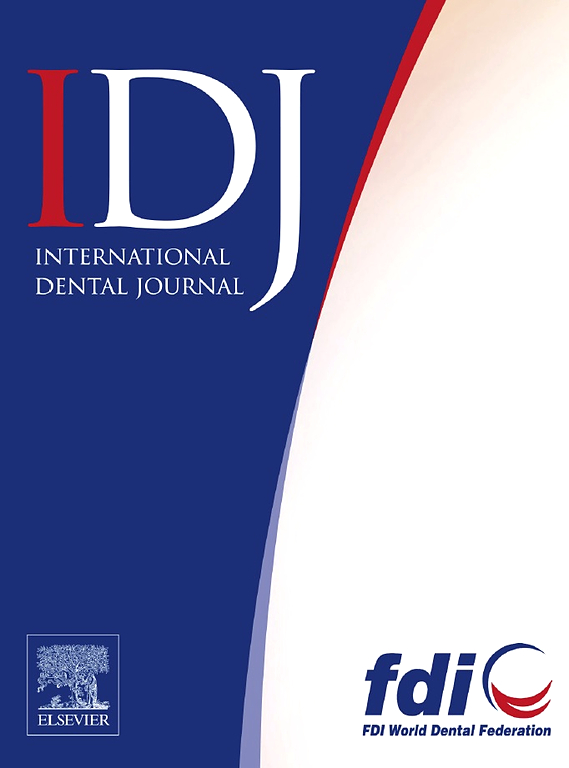IF 3.2
3区 医学
Q1 DENTISTRY, ORAL SURGERY & MEDICINE
引用次数: 0
摘要
引言和目的流行病学研究表明,甲状腺功能障碍(TD)与口腔扁平苔藓(OLP)之间的关系存在争议,因果关系仍不明确。方法我们从全基因组关联研究数据库中提取了OLP和10种TD表型的遗传工具。主要采用反方差加权法评估TD和OLP之间的双向因果关系。敏感性分析(Cochran's Q检验、MR-Egger截距和leave-one-out检验)验证了结果的稳健性。结果正向MR分析表明,桥本氏甲状腺炎(HT)与发生OLP的较高可能性有提示性联系(P = .0077),而甲状腺功能减退症会显著增加发生OLP的风险(P = .0002)。反向磁共振研究发现,OLP与甲状腺功能亢进症(P = .0126)和甲状腺癌(P = .0244)的发生呈提示性相关。此外,还发现OLP会显著增加甲亢(P = 3.47 × 10-⁸)、巴塞杜氏病(P = 1.03 × 10-⁵)、甲减(P = 1.08 × 10-⁸)和促甲状腺激素水平升高(P = 1.99 × 10-⁶)的风险。这些研究结果表明,甲状腺功能减退症会显著增加OLP的风险,而OLP可能会导致自身免疫性甲状腺疾病的发生,尤其是HT、Graves病、甲状腺功能减退症和促甲状腺激素。这些发现凸显了内分泌系统和免疫系统之间复杂的相互作用,强调了进一步研究共享分子通路和潜在临床影响的必要性。这项研究为了解TD和OLP之间的关系提供了遗传学基础,有助于早期筛查和诊断,并为治疗方法的开发提供信息。本文章由计算机程序翻译,如有差异,请以英文原文为准。
Thyroid Dysfunction and Oral Lichen Planus: Evidence From Two-Sample Mendelian Randomization Analysis
Introduction and aims
Epidemiological studies have shown that the association between thyroid dysfunction (TD) and oral lichen planus (OLP) is controversial, and the causal relationship remains ill-defined. This study aims to investigate their probable mutual causality using bidirectional Mendelian randomization (MR) analyses.
Methods
We extracted genetic instruments for OLP and 10 phenotypes of TD from the genome-wide association studies database. The inverse variance weighted method was primarily used to evaluate the bidirectional causal relationship between TD and OLP. The results’ robustness was verified by sensitivity analysis (Cochran's Q test, MR-Egger intercept, and leave-one-out test). Bonferroni correction threshold (0.05/10) was applied to determine significant differences.
Results
Forward MR analysis indicated that Hashimoto's thyroiditis (HT) was suggestively linked to a higher likelihood of developing OLP (P = .0077), while hypothyroidism significantly increased the risk of OLP occurrence (P = .0002). The reverse MR study found that OLP was suggestively related to the occurrence of hyperthyroidism (P = .0126) and thyroid cancer (P = .0244). Furthermore, OLP was found to significantly increase the risk of HT (P = 3.47 × 10–⁸), Graves’ disease (P = 1.03 × 10–⁵), hypothyroidism (P = 1.08 × 10–⁸), and elevated thyroid-stimulating hormone levels (P = 1.99 × 10–⁶). No major pleiotropy or heterogeneity was detected (P > .05).
Conclusion
These findings suggest that hypothyroidism significantly increases the risk of OLP, while OLP may contribute to the development of autoimmune thyroid disorders, particularly HT, Graves’ disease, hypothyroidism, and thyroid-stimulating hormone. These findings highlight the complex interaction between endocrine and immune systems, emphasizing the need for further research into shared molecular pathways and potential clinical implications.
Clinical Relevance
This study provides a genetic foundation for understanding the relationship between TD and OLP, which aids early screening and diagnosis and informs therapy development.
求助全文
通过发布文献求助,成功后即可免费获取论文全文。
去求助
来源期刊

International dental journal
医学-牙科与口腔外科
CiteScore
4.80
自引率
6.10%
发文量
159
审稿时长
63 days
期刊介绍:
The International Dental Journal features peer-reviewed, scientific articles relevant to international oral health issues, as well as practical, informative articles aimed at clinicians.
 求助内容:
求助内容: 应助结果提醒方式:
应助结果提醒方式:


